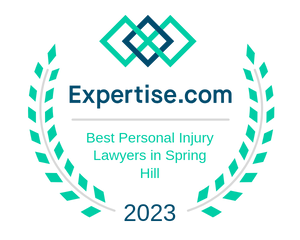Common Injuries from T-Bone Accidents
Broadside collisions, commonly referred to as T-bone accidents or right-angle crashes, are a particularly dangerous type of motor vehicle accident in which the front of one vehicle impacts the side of another vehicle. These accidents generally occur at intersections when one driver has failed to yield the right of way to another.
The risk of injury is significant for the occupants of either vehicle, particularly if there is a size discrepancy between the cars involved. Here is a look at the types of injuries commonly suffered in T-bone accidents for occupants who sustained the frontal impact in the crash and those who suffered a side impact. A knowledgeable
car accident lawyer can help you understand your legal rights and options and work to ensure that you receive the compensation you deserve for your injuries.
Injuries Commonly Incurred Through a Frontal Impact
A T-bone crash causes the occupants of one vehicle to experience a frontal impact crash while the occupants of the other vehicle experience a side impact crash. Each of these impacts can result in severe or even fatal injuries.
However, the injuries sustained often differ, depending on which vehicle the occupant was riding in. When a vehicle incurs a frontal impact, its forward motion is stopped by the crash, but the occupants inside continue to move forward until their seatbelt stops them or if they’re not buckled in they are ejected through the windshield.
Whiplash
Whiplash is a serious injury on the soft tissues of the neck that occurs as a result of the head snapping back and forth rapidly after a collision. This back-and-forth motion is most commonly associated with rear-impact collisions. However, frontal impacts also typically cause damage to the neck, even when the vehicle’s front airbags deploy.
As described by Johns Hopkins Medicine,
whiplash presents with symptoms such as pain and stiffness in the neck or shoulder, dizziness, pain or numbness in the arm or hand, blurred vision, ringing in the ears, and fatigue. While most people recover from the condition with a few weeks of pain relievers, muscle relaxers, and physical therapy, some continue to suffer pain for months or even years following the injury.
Seat Belt Injuries
Seat belts have saved many lives. Unfortunately, as the National Library of Medicine noted, they’ve also caused many injuries. Individuals in a crash where their vehicle sustained a frontal impact often have
a series of injuries related to the forceful pressure of the seat belt on their body.
Seat belt injuries are also referred to as seat belt syndrome and include:
- Skin abrasions and bruising on the abdomen from the lap portion of the seat belt.
- Internal damage to the bowel and other organs, such as the liver and spleen.
- Fractures of the lumbar spine.
- Thoracic injuries, including fractures to the sternum, clavicle, or ribs.
- Damage to the vessels and vertebrae in the neck.
Knee Injuries
When a frontal impact is sustained, the contents of the engine compartment can be forced backward so that they intrude into the vehicle’s passenger compartment. This is generally experienced as an impact between the knees of front seat occupants and the dashboard that damages the kneecap or the knee’s soft tissues.
Vehicle occupants may sustain other
lower extremity injuries in a frontal impact, including hip dislocations in taller male occupants, as well as foot and ankle fractures from forceful braking.
Traumatic Brain Injuries
Traumatic brain injuries can be sustained by the occupants of either vehicle involved in a T-bone accident and are particularly common in accidents where an individual is not wearing a seat belt and makes contact with the windshield or is ejected from the vehicle.
Traumatic brain injuries involve damage to the brain as a result of a sudden blow or jolt to the head or body. As the Centers for Disease Control and Prevention (CDC) noted, traumatic brain injuries result in around 230,000 hospitalizations each year in the U.S., and
approximately 64,000 people will die from a traumatic brain injury.
A traumatic brain injury (TBI) can lead to both short-term and long-term problems. Many people who have suffered a concussion considered a less severe form of TBI will heal and return to normal activity within weeks of suffering the injury. However, those suffering more severe TBIs or repeated concussions can wind up with permanent disabilities. These disabilities will generally result in a loss of the sufferer’s ability to earn an income or live independently. For this reason, TBIs are considered catastrophic injuries.
Injuries Often Sustained Through a Side Impact
It is impossible to determine who was at fault for a T-bone accident simply by looking at the damage to the two vehicles. When someone fails to yield the right-of-way and winds up in the intersection when another directional lane of traffic has the green light, the at-fault driver’s vehicle can either strike the side of a vehicle in the travel lane or can drive into the path of another driver who is unable to stop in time to avoid crashing into the side of the at-fault party’s vehicle. The vehicle’s occupants that sustained a side impact commonly suffer the injuries listed below.
Crush Injuries
The door panels of vehicles generally offer less protection in side impact crashes than an engine compartment would for those suffering frontal impacts or the trunk would in an accident involving the vehicle’s rear. This is particularly true when a smaller vehicle is hit on the side by a much larger vehicle. The occupants sitting on the side of the vehicle that was struck will often suffer crush injuries to their lower extremities due to the intrusion of the other vehicle and even the metal and glass from the door intruding into the passenger cab of the vehicle.
Crush injuries result from force or pressure on a body part. These injuries can include damage such as severe bleeding or bruising, serious damage to the muscles, nerves, blood vessels, and skin tissue, broken bones, lacerations, and infection from bacteria entering an open wound. Crush injuries can lead to the amputation of a limb in some cases.
Neck or Back Injuries
When a vehicle sustains a side impact, seatbelted occupants will often sustain injuries to the neck and back caused by their bodies being dramatically jolted. This can cause damage to the soft tissues of the neck or back, as well as the spinal vertebrae and discs. An individual will suffer a spinal cord injury in the most severe cases.
Spinal cord injuries typically result in a loss of sensation and function below the injured area, a condition known as paralysis. Paralysis can be complete, or the individual can retain some sensation. According to the National Spinal Cord Injury Statistical Center (NSCISC), around 179,000 people will suffer a spinal cord injury each year, with motor vehicle accidents being the most common cause of the injury.
Only 32 percent of spinal cord injury sufferers will eventually return to the workplace after treatment for the injury, and many will be unable to perform daily living tasks unassisted. Because of this, spinal cord injuries are also commonly considered catastrophic injuries.
Lacerations from Broken Glass and Bent Metal
While many newer model vehicles feature side airbags intended to reduce the risks of injuries to occupants in side-impact crashes, it is not unusual for these occupants to incur deep lacerations as glass and metal intrude into the passenger compartment during the impact. These lacerations present short-term risks, such as infection and blood loss, and long-term risks, such as scarring or disfigurement.
Internal Injuries
The force applied by the seat belt in an accident or the intrusion of the door panel into the area of the vehicle where someone is sitting can also result in internal injuries, which involve damage to bodily organs such as the aorta, heart, or spleen. These injuries can result in a dangerous amount of blood loss or even loss of the organ’s ability to function. Side-impact collisions often cause penetrating injuries that can significantly damage internal organs and increase infection risk.
In some cases, internal organ damage is caused by broken bones puncturing those organs. For example, a pneumothorax (collapsed lung) is commonly the result of a broken rib that has punctured the lung. Internal injuries are often life-threatening and require immediate medical intervention.
The Importance of a Thorough Medical Evaluation After a T-Bone Accident
Individuals involved in T-bone accidents often decline medical treatment at the scene because they don’t feel hurt, only to find hours or days later that they are significantly injured. The delay in the presentation of symptoms that would allow the sufferer to know they’re injured is typically the result of adrenaline.
As explained by Reid Physicians Group,
adrenaline is a hormone designed to prompt a fight or flight response. A surge of adrenaline causes several self-preservation responses, including increased energy, reduced or no pain, dilated blood vessels that increase oxygen flow to the body, increased strength, and changes to vision or hearing that focus on signs and signals ahead of you.
As the adrenaline wears off and the body begins to settle from the trauma, the full effect of the injuries will gradually be felt. This often worsens pain over the next several days before attempting to recover. It is important to receive a thorough medical evaluation as soon as possible
after the accident to determine the extent of the injuries suffered and to begin treating those injuries before they worsen. This evaluation often includes imaging scans, such as x-rays or MRIs, and a physical exam.
What To Do if You’re Injured in a T-bone Accident?
If you’ve been injured as a result of a T-bone accident caused by another driver’s failure to yield, once you have received medical treatment for your injury, the next important task on the list is to speak with an experienced car accident attorney who can help you understand the personal injury claims process that can be used to seek compensation for your injuries.
Compensation is generally available for injury-related expenses, such as medical bills, damage to your vehicle, and lost wages resulting from missing work while you were recovering from the injury. Compensation is also available for the psychological impacts you incurred from the injury, including physical and emotional pain and suffering.
A
personal injury attorney in Florida and their legal team can provide instructions on things you can do to help your claim, such as avoiding talking to the at-fault party’s insurance claims adjuster on your own or posting about your accident on social media. If you have avoided seeking medical attention for your injury because you do not have health insurance, an attorney can help you secure funding for that treatment in some cases, with payment for the treatment being paid when you receive a settlement for your claim.
Even if you are not at fault for the accident and are planning to seek compensation from the at-fault party’s auto liability insurance policy, you are still required to report the accident to your own insurance provider as soon as possible. The
accident must also be reported to the state authorities, though this is typically handled by the police officer who investigated the accident scene. The police report can generally be accessed within a few weeks of the incident, with the timing of that report depending on state law where you live.
Finally, it is essential to rest and relax and focus on your physical recovery while your attorney and their legal team focus on recovering the compensation you need to move forward from the accident.
Schedule a Free Initial Consultation Today!
James Wayne Holliday
James Wayne Holliday has been practicing law since 1995. He has been named as a “Best Attorney” Lifetime Charter Member in Florida, an honor awarded to less than one percent of the nation’s lawyers.
Mr. Holliday has earned a reputation as a relentless trial lawyer because of his outstanding work ethic and thorough preparation of his cases for trial.
Author's Bio









